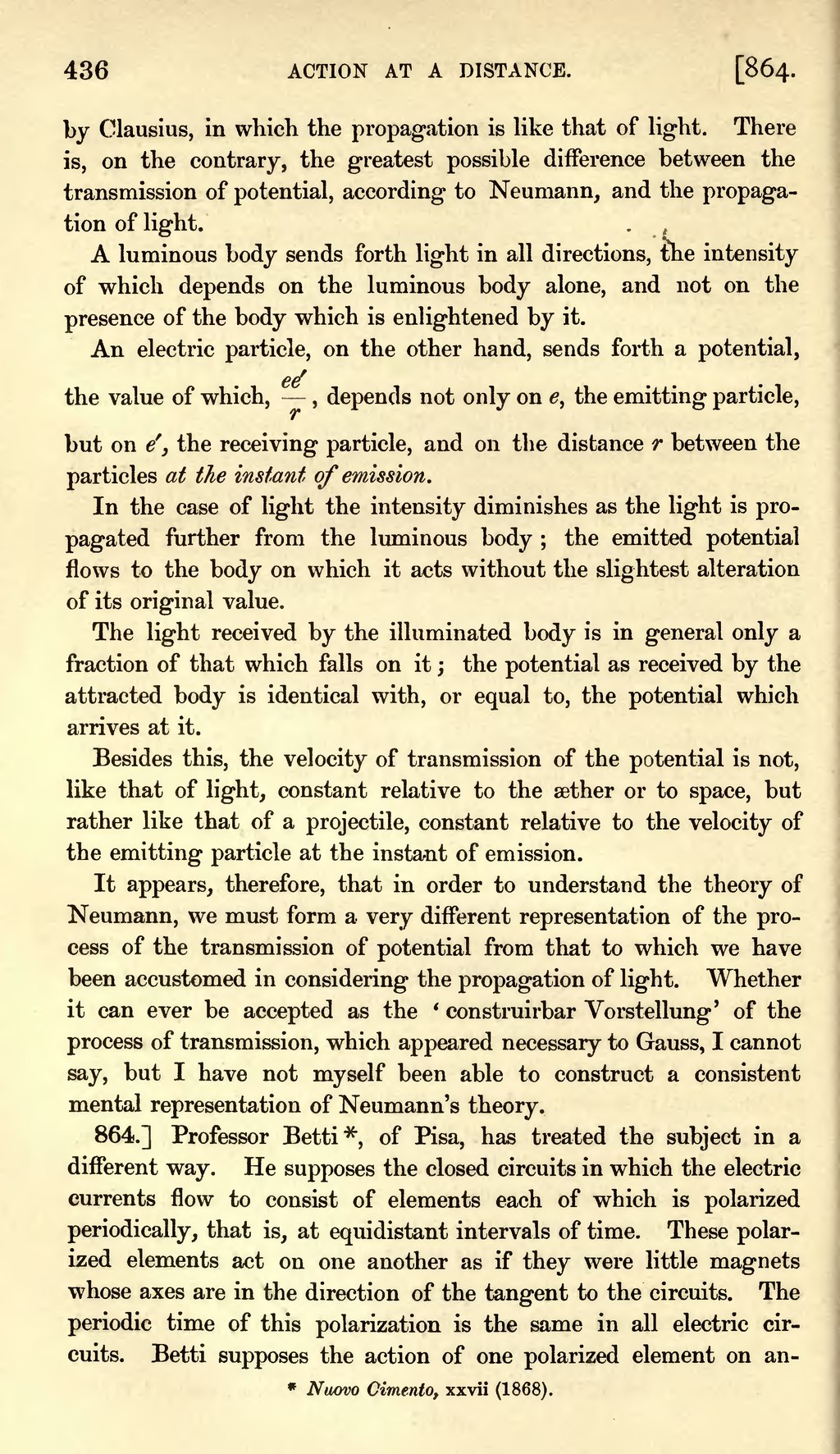by Clausius, in which the propagation is like that of light. There is, on the contrary, the greatest possible difference between the transmission of potential, according to Neumann, and the propagation of light.
A luminous body sends forth light in all directions, the intensity of which depends on the luminous body alone, and not on the presence of the body which is enlightened by it.
An electric particle, on the other hand, sends forth a potential, the value of which, , depends not only on , the emitting particle, but on the receiving particle, and on the distance between the particles at the instant of emission.
In the case of light the intensity diminishes as the light is propagated further from the luminous body; the emitted potential flows to the body on which it acts without the slightest alteration of its original value.
The light received by the illuminated body is in general only a fraction of that which falls on it; the potential as received by the attracted body is identical with, or equal to, the potential which arrives at it.
Besides this, the velocity of transmission of the potential is not, like that of light, constant relative to the æther or to space, but rather like that of a projectile, constant relative to the velocity of the emitting particle at the instant of emission.
It appears, therefore, that in order to understand the theory of Neumann, we must form a very different representation of the process of the transmission of potential from that to which we have been accustomed in considering the propagation of light. Whether it can ever be accepted as the 'construirbar Vorstellung' of the process of transmission, which appeared necessary to Gauss, I cannot say, but I have not myself been able to construct a consistent mental representation of Neumann's theory.
864.] Professor Betti[1], of Pisa, has treated the subject in a different way. He supposes the closed circuits in which the electric currents flow to consist of elements each of which is polarized periodically, that is, at equidistant intervals of time. These polarized elements act on one another as if they were little magnets whose axes are in the direction of the tangent to the circuits. The periodic time of this polarization is the same in all electric circuits. Betti supposes the action of one polarized element on an
- ↑ Nuovo Cimento, xxvii (1868).




